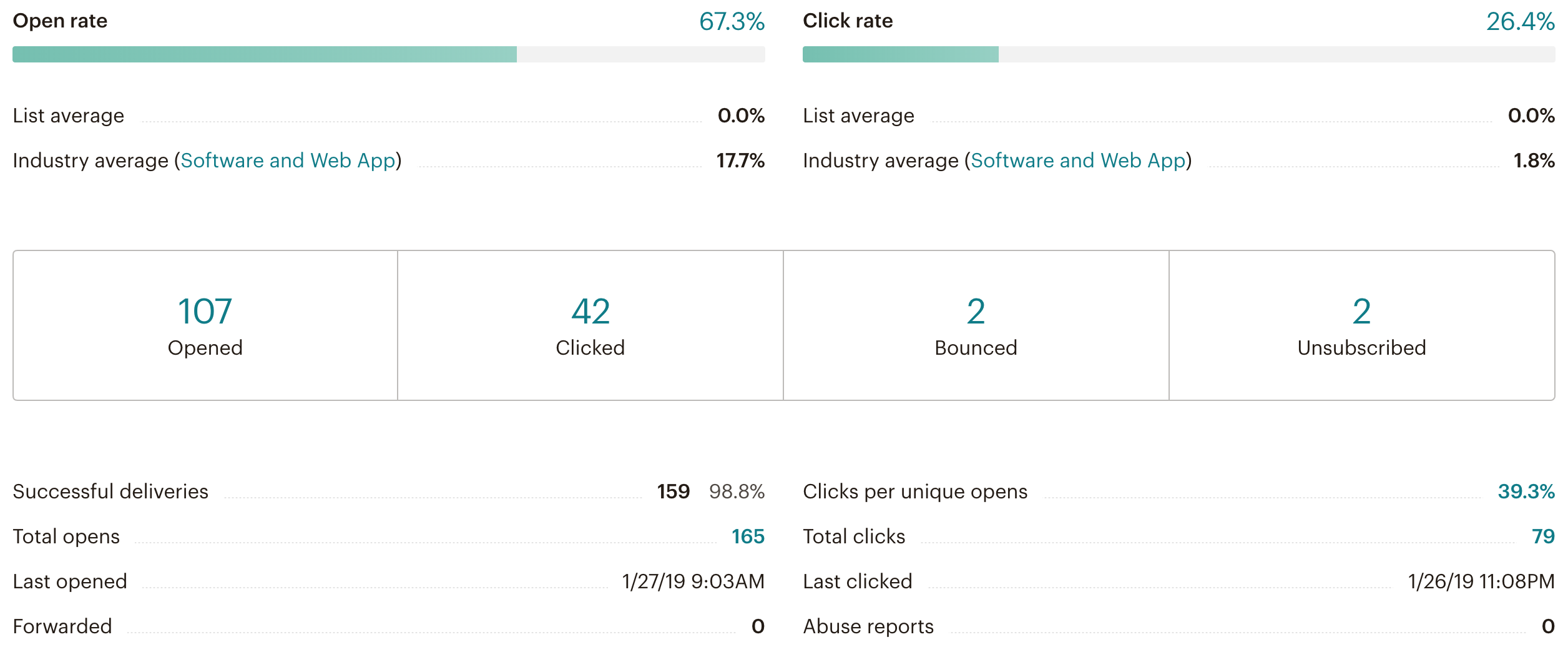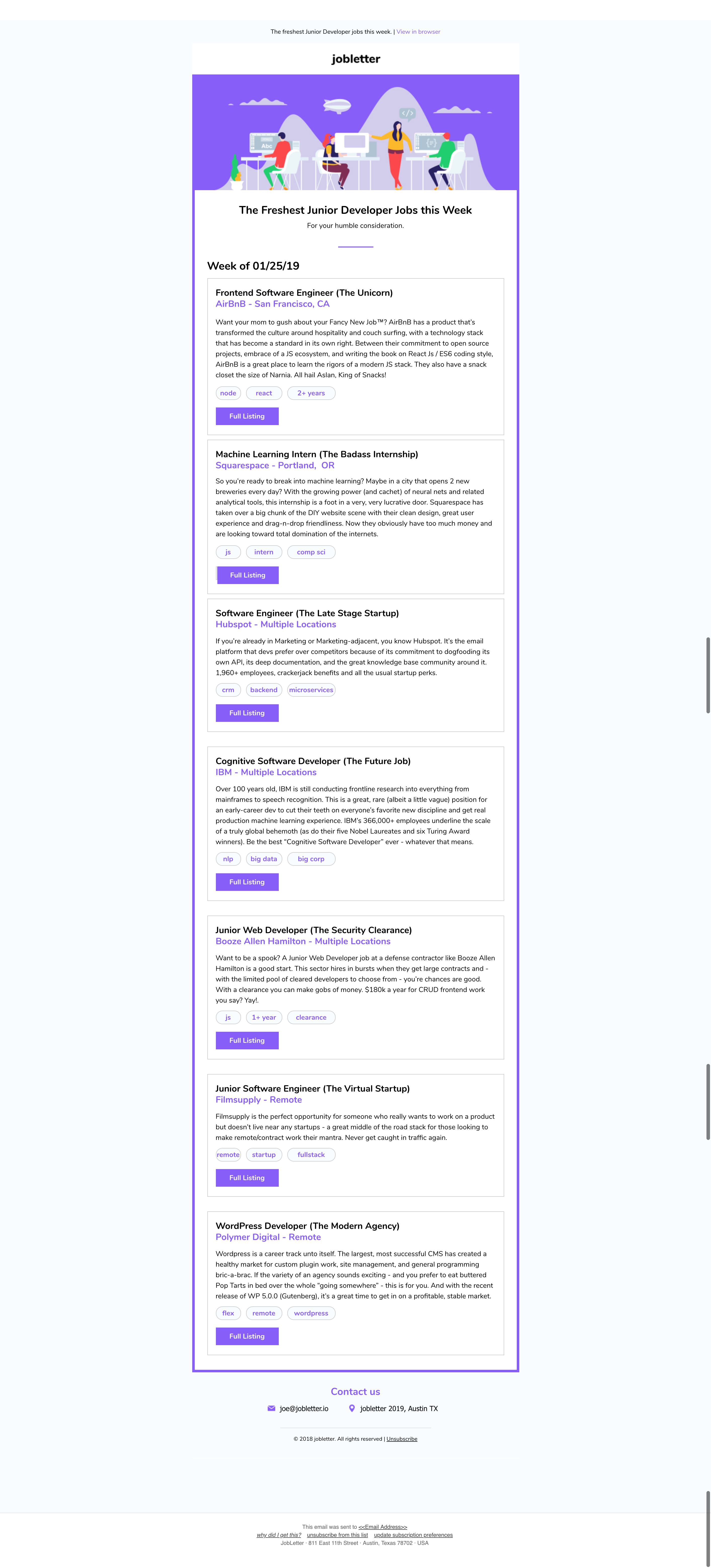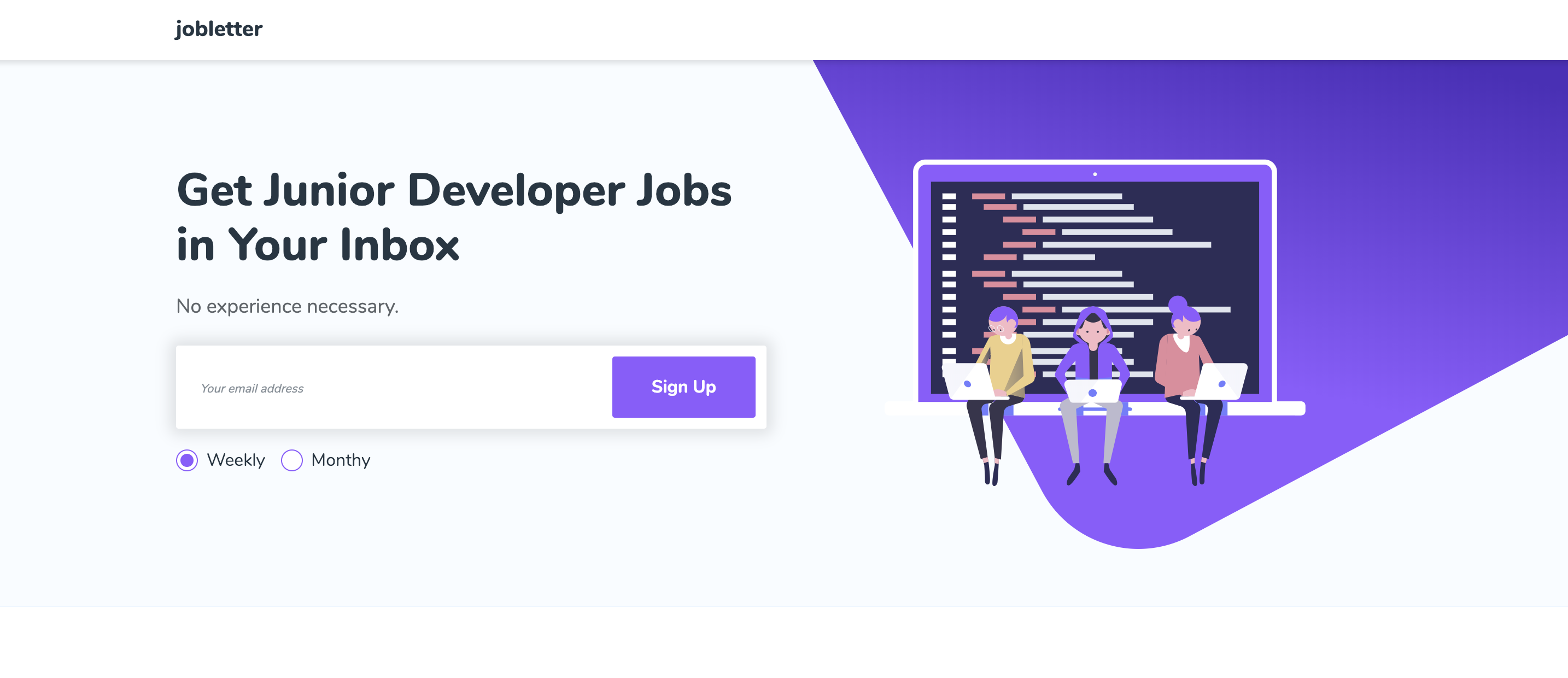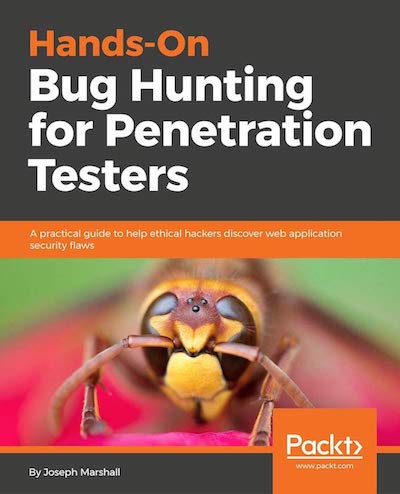Three weeks ago we launched jobletter.
Since then, we’ve been promoting the site, collecting feedback from friends, and experimenting with with a more open approach to writing about our process.
All that culminated in us reaching a milestone this past Friday - our first email. Over the past week we’d worked with a freelancer to deliver an email template, as well as winnow down the jobs we’d been collecting. We wanted a good mix of industries, company sizes and technology stacks - emphasizing location-independent postings like businesses hiring in multiple locations, or startups open to hiring remote junior workers (harder to find, but they exist).
Firing it off Friday might not have been the best move. A lot of studies show that are multiple valid strategies - send it in the morning, when people are taking their coffee break, or in the late evening as counterprogramming for everyone scrolling through their inbox with a glass of wine - but not on a Friday at 5pm. But it was 5 o’ clock and after waiting until we were done with work, we (ok, maybe me) were eager to fire it off on a weekday. And firing it off then would give us time over the weekend for a retrospective.
Lucky us - it didn’t seem to hurt too much.
The Campaign

We were floored by this response. We’ve gotten great feedback, but this was our first real deliverable, and our list was reading it. We were also delighted by the intelligence our click analytics provided.

A 67 percent open rate and 26 percent CTR are both incredible metrics! of course there are a few caveats.
- Our list is small (this campaign sent to 159 subscribers successfully, two hard bounced), which could be skewing our results assuming we just lucked out in our audience. For some context, Mailchimp only includes lists with over 1,000 subscribers in its regular analysis of industry benchmarks for open rates and CTR.
- This is only one email. We need more data.
Given this, there’s a natural next question - where’s the email?
The Email
From: Joe and David
Subject: Jobletter Junior Dev Jobs - 01/25/19

These are early days yet - we have a lot of ideas about how to improve the formatting, the design, and both the kinds of jobs we’re presenting and the copy we’re using to present them (for example, it’s fascinating that our most “aspirational” jobs at established companies like Hubspot were also our least trafficked). But we’re hoping in the coming weeks to synthesize feedback we get from our metrics, users (and maybe you, dear reader).
Rationale
For now, here are some thoughts behind the current organization.
Seven jobs is our Golidilocks number. For now
We don’t know what the feedback from our user conversations will be, but with our formatting ten seems overwhelming, while five jobs doesn’t give us enough diversity.
Our voice is in ongoing development
It’s important to strike a tone that’s breezy without sacrificing professionalism or masking our expertise. Though humor can go a long way (surprise). Deciding how we want to approach the writing will evolve as we tinker with the format, but this was a good first go.
Nothing but our service - jobs.
We could have or could eventually add a featured article, or a cool github repo (maybe a newbie-friendly open source project to join?), but for now its paramount we get the most basic value prop of our service right - jobs people want to see.
Remote is awesome (when we can find it).
Some of our most-clicked entries turned out to be remote positions, and their appeal doesn’t surprise us. Though they’re not too common, we’ll definitely be trying to do more of these going forward. They’re a great idea for the right candidate - it’s a shame there aren’t more.
Personal is fine.
While we’ll keep experimenting with every part of the email, we went with “Joe and David” in the “From” field, partially because it was a fun wink to “Harry and David” but also because it reflects our personal touch.
The “subject” should be all business.
One possible good approach to writing subject lines is to be clear and direct about what the email contains - as opposed to writing a “curious” subject line that piques interest. For this first email though, we didn’t want to dive into clever, or cryptic, strategies, we wanted to simply convey what the reader could expect.
Moving Forward
For next week’s email we have some tweaks we’re thinking about, but we’re mostly still in the fact finding stage of things. We’re going to start reaching out to users, scheduling phone calls, and listening hard to the needs and hopes of an entire cohort of people trying to break into a career in development.
It might not be as structured as a rigorous UX testing session, but we do want to explore a few general lines of inquiry:
- What kinds of jobs do you want to see?
- Are there any other ways you’d like to receive them?
- Is there anything beyond jobs you’d like to see in the email?
These are pretty foundational, what-kind-of-product issues that will provide insight into our general direction. We don’t want to get caught up in the small details around design or layout, so much as the product in its totality.
Stay in Touch
If you read the email above and thought “I want to go to there” sign up for the service below.
And check back - I’ll be writing more about jobletter in the coming weeks.

